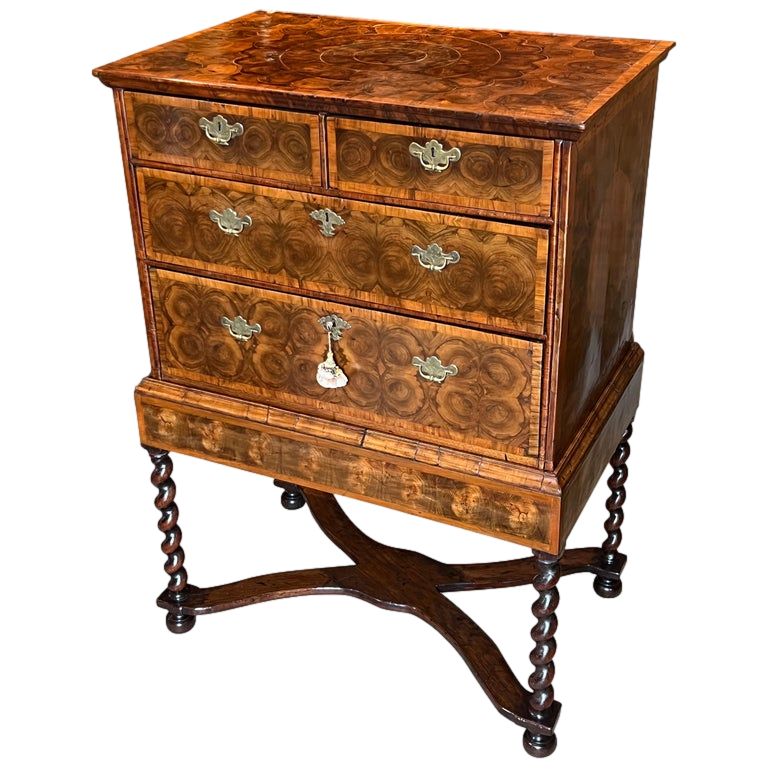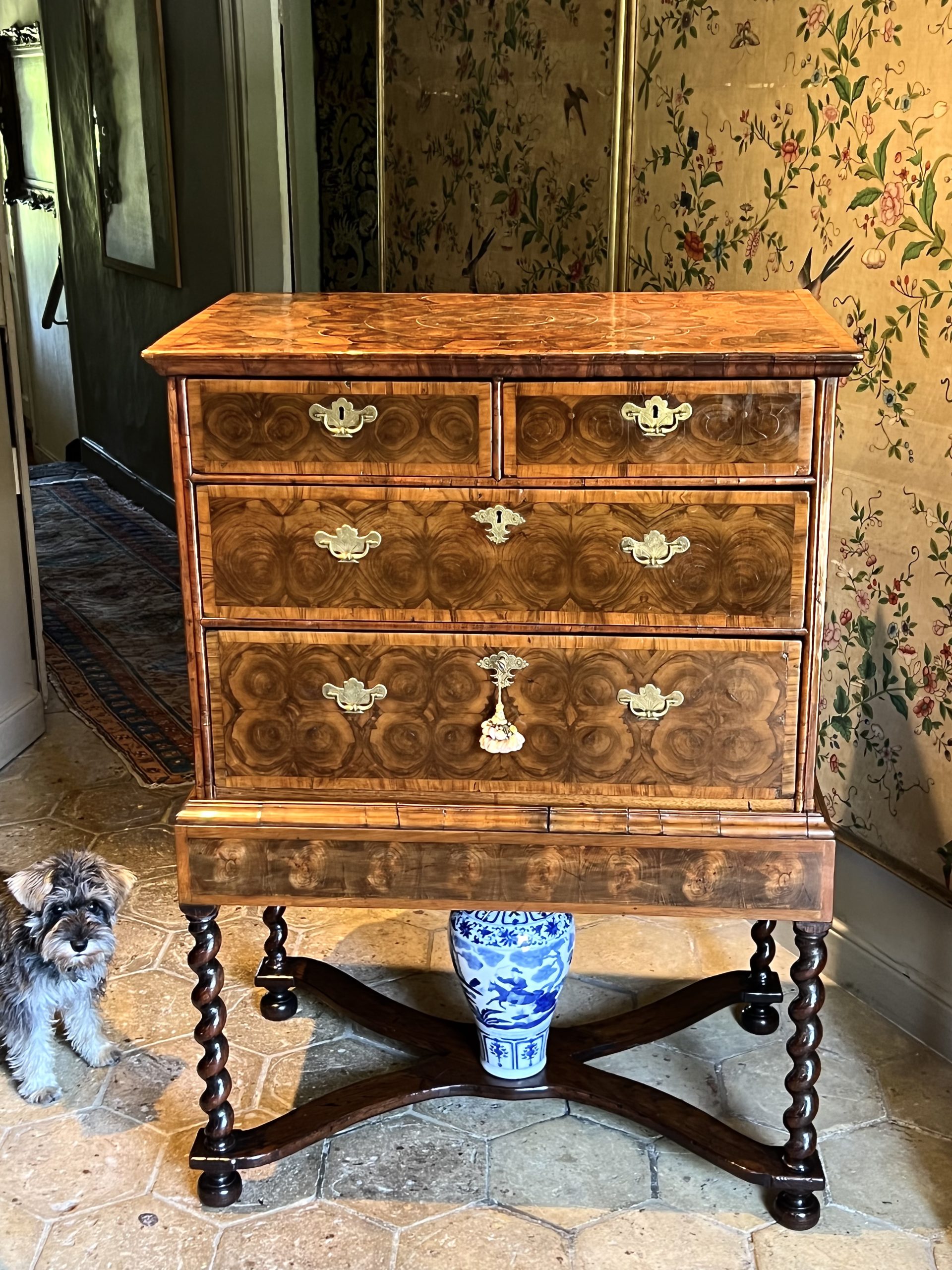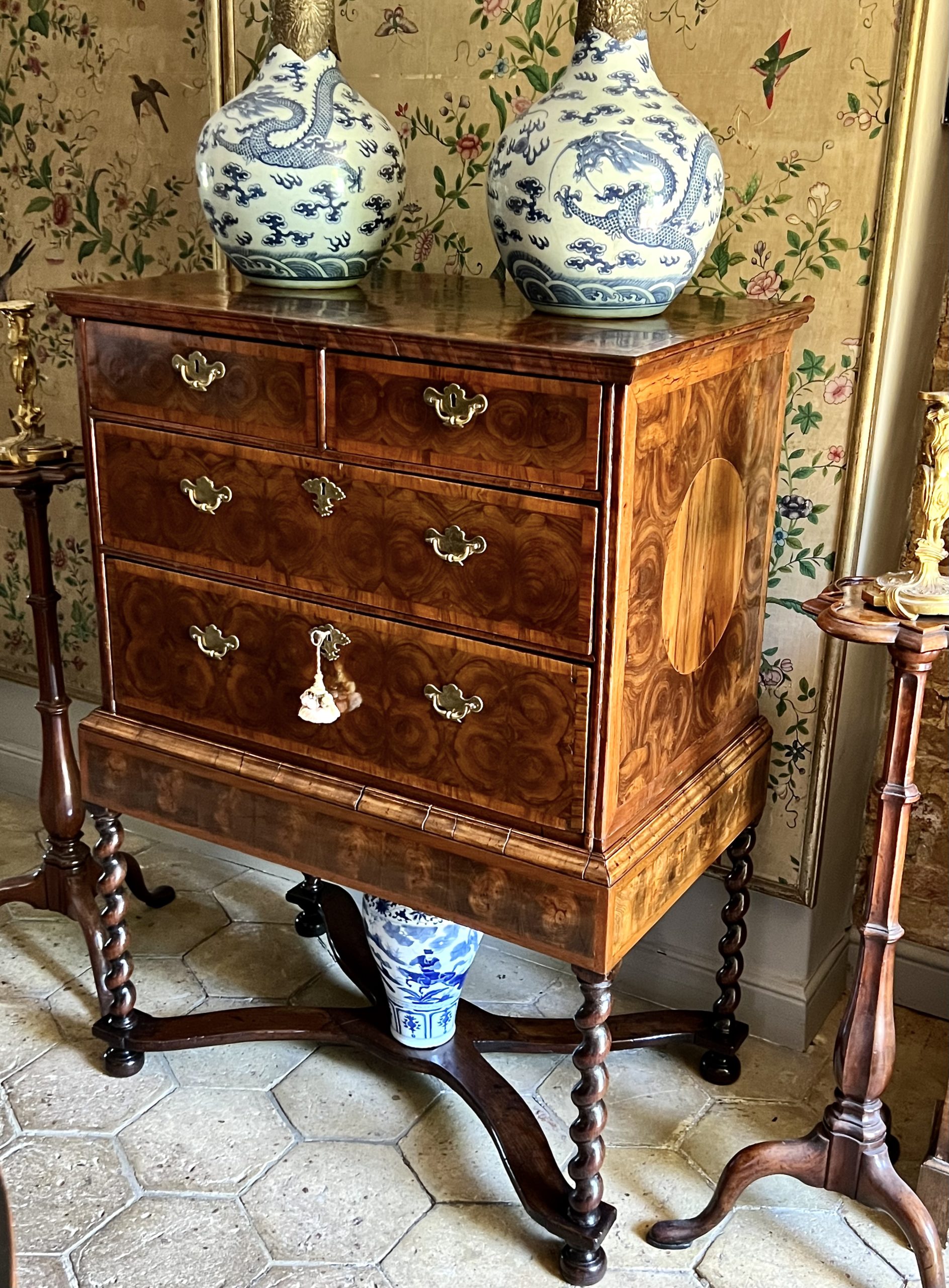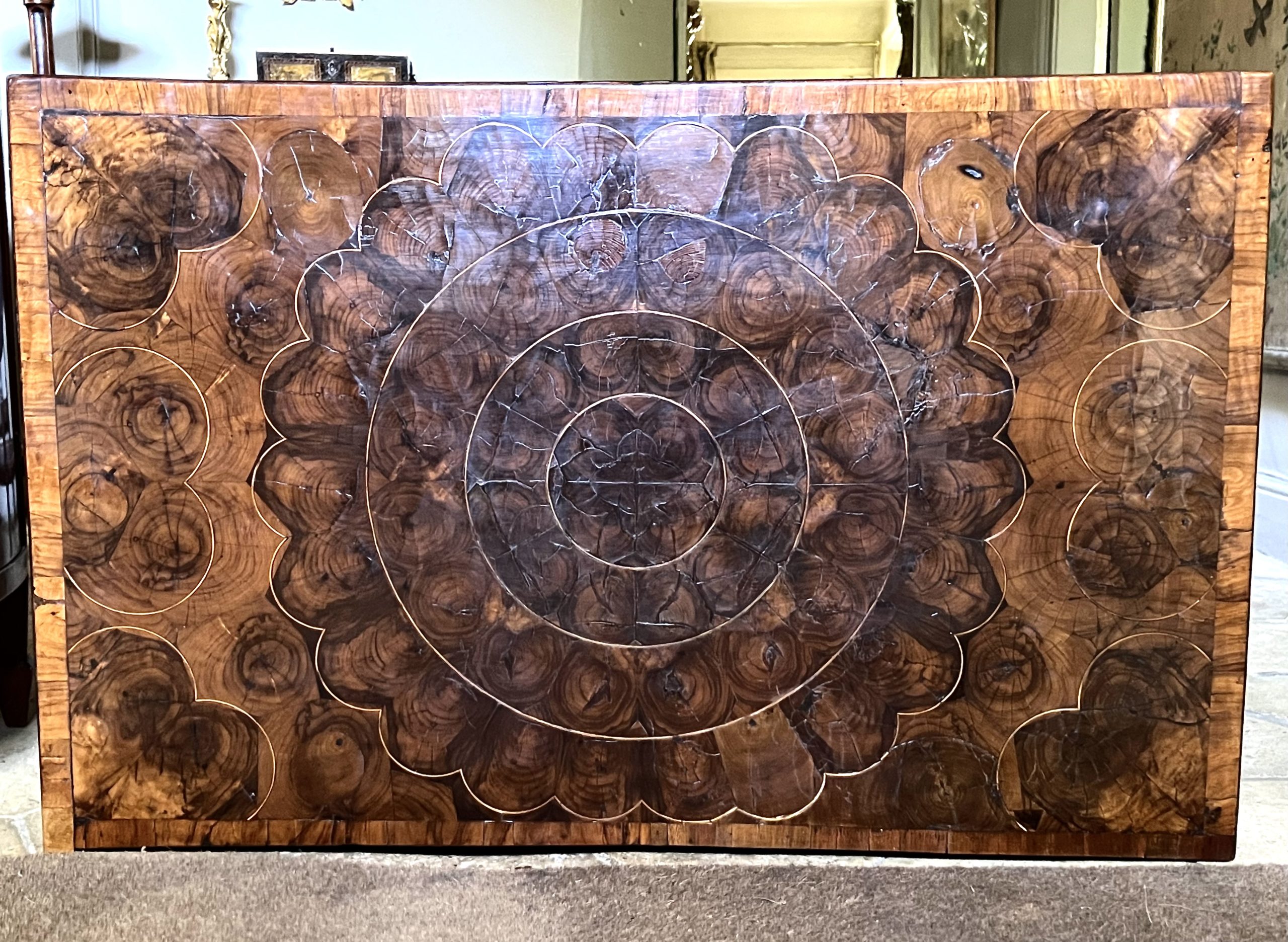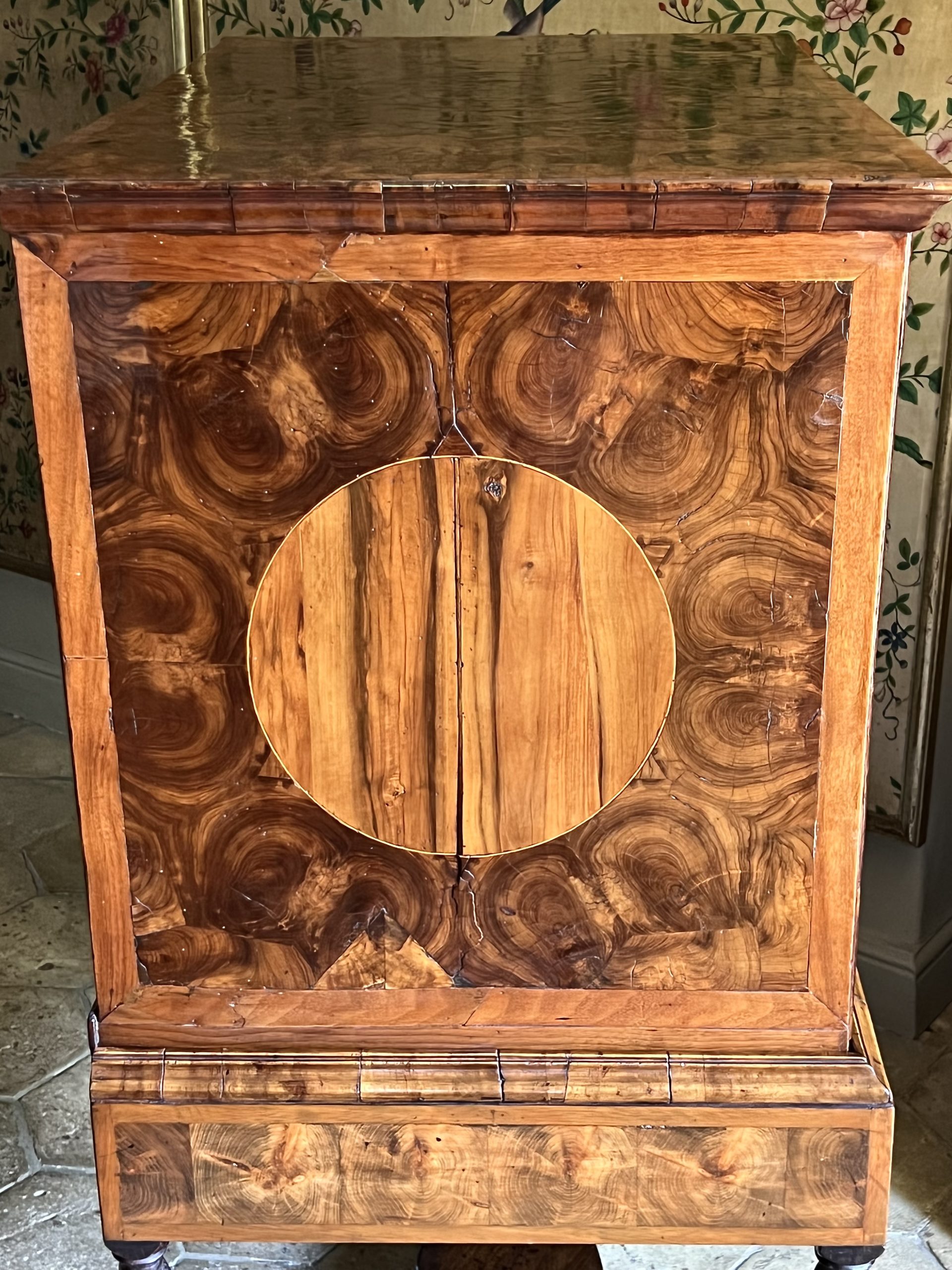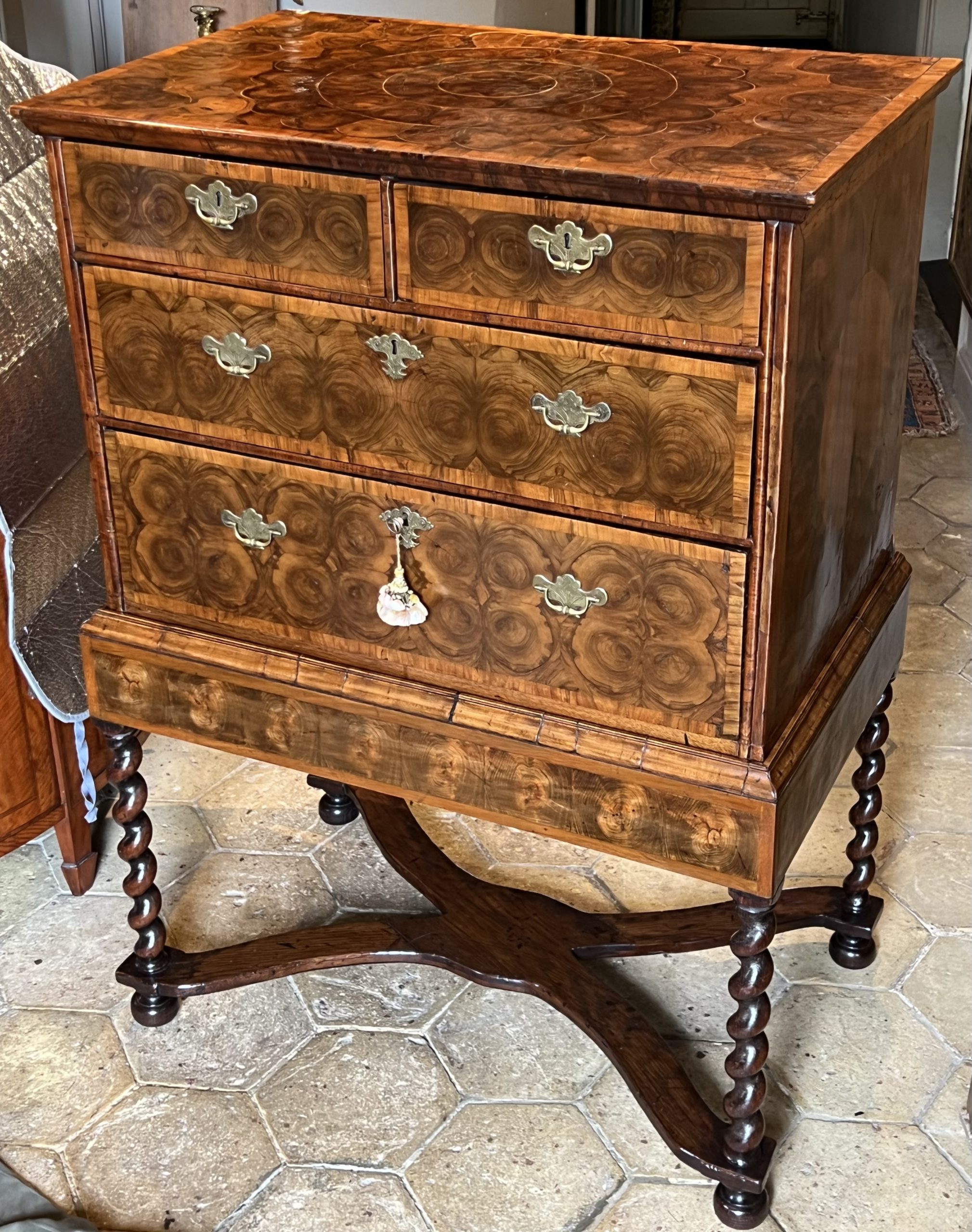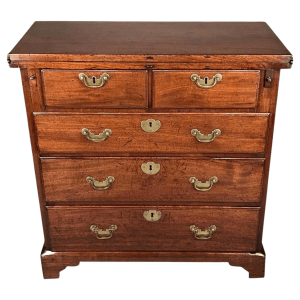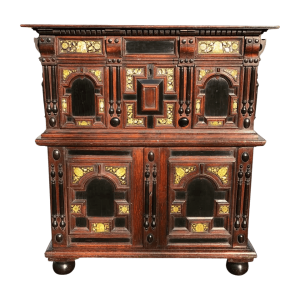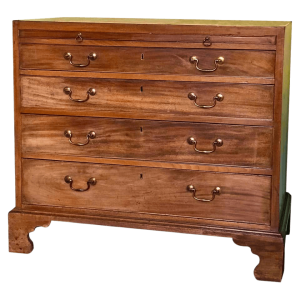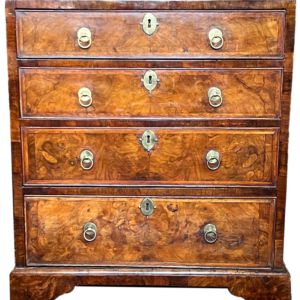Description
A fine and well-proportioned oyster laburnum and walnut chest on stand. Charles II period, ca 1675.
This late-17th century chest is in well-figured, concentric, radiating, oyster laburnum veneers within what appears to be boxwood lines, with walnut crossbanding. Glorious colour and old patina throughout.
Period working key. Brasses later, stand restored. In superb condition and of excellent colour and patina throughout. The cross-grain D mouldings applied to the drawer dividers are clearly indicative of the period.
Charles II, on his restoration in 1660 – having spent much time at the French court during his exile – greatly promoted French, Dutch and Italian styles which, on his return, came to dominate English fashion.
The return of the king and his court from exile led to the replacement of the Puritan severity of the Cromwellian style, with a taste for magnificence and opulence and to the introduction of Dutch and French artistic influences. These are evident in furniture manifesting the use of floral marquetry, walnut instead of oak, twisted turned supports and legs, exotic veneers, cane seats and backs on chairs, sumptuous tapestry and velvet upholstery, and ornate carved and gilded scrolling bases for cabinets.
This chest dates from that time, and the fashion for richly-fashioned oyster inlays continued into the reign of William and Mary (ca 1650-1702).
Refs:
Clevedon Salerooms sold a similar antique oyster walnut chest, but “originally on a stand”, for £26,450 on September 2nd, 2000.
Christie’s sold a similar William and Mary period chest @ £18,750 “with restorations and replacements”, 21 January 2010, lot 26.
Literature:
Ralph Edwards CBE FSA notes two chests of the same period in his Shorter Dictionary of English Furniture, Hamlyn (Fourth edition 1972) p. 202, illustr. 14 (Bourne Park, Kent) & illustr. 16 (J. Thursby Pelham Collection).
Vis illustrations in Herbert Cescinsky, English Furniture Of The Eighteenth Century, George Routledge & Sons (1911) vol. I, p. 128, figs. 145 & 146.
Ralph Edwards CBE FSA [sic] illustrates a comparable cabinet p. 93, ill. 7. Dated 1685.
English Homes, Late Georgian, 1760-1820, H. Avray Tipping, London (1926)
Inventory, 1749, ”one Olive Cabinet [sic] in The Blue Chamber”;
Inventory, 1885, p. 17, ”in The Boudoir”.
Arthur T. Bolton, Mersham le Hatch, Country Life, 26 March 1921, ”photographed in The Staircase Hall”, p. 372;
p. 19,” on The First Floor Landing”;
”in situ”, [sic] p. 128.



